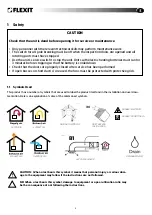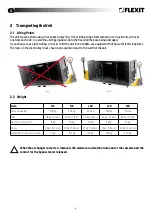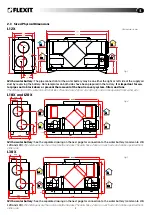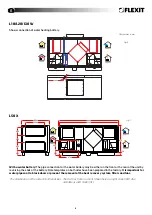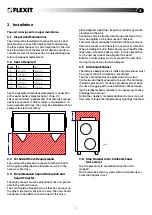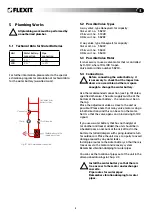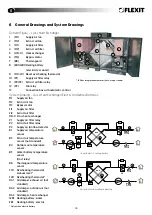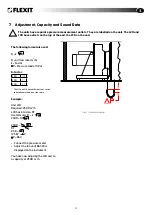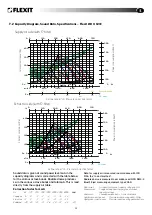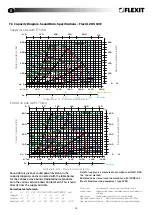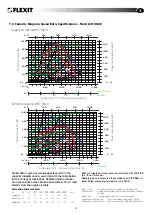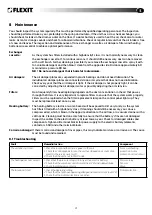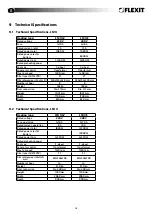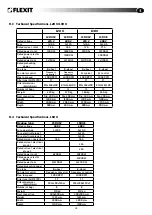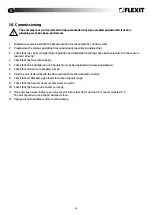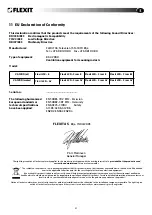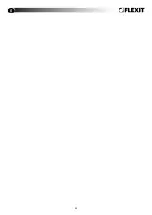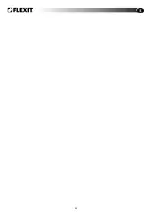
17
8 Maintenance
You should inspect the system regularly. This must be performed by qualified operating personnel. The inspection
should be performed twice a year, preferably in the spring and autumn. If the unit has a cross heat exchanger, you
should check for leaks in the drain or water on the floor. If a water battery is used to heat the air, check also for water
leaks. Listen for strange sounds and check for abnormal vibrations. Check at regular intervals that the air intake is free
of snow and leaves. The inspection and maintenance of fans, exchanger cassettes, air dampers, filters and heating
batteries are essential to achieve optimal performance.
exchanger
cassette:
As the system has filters installed with a high densityF class, it is not normally necessary to clean
the exchanger cassette. If, for various reasons, it should still be necessary, dust can be removed
with a soft brush. Further cleaning is possible if you remove the exchanger cassette, spray it with
fat-soluble detergent and then blow it clean from the opposite side. Distance approximately 60
mm and max. pressure 80 bar.
NB ! Do not use detergent that is harmful to aluminium.
Air dampers:
The air damper plates are suspended in plastic bearings and do not need lubrication. The
individual air damper plates are connected via an arm system that does not need lubrication.
Check every year that the air damper is tight. If the air damper is not properly tight, it can be
corrected by adjusting the air damper motor or possibly adjusting the arm tension.
Filters:
How frequently filters need replacing depends on the dust concentration in the air that passes
through the filters. It is very important to replace filters to ensure that the system works properly.
Filters must be replaced when the filter replacement lamp on the control panel lights up. They
must be replaced at least once a year.
Heating battery:
The heating battery, electric or water-based, will be exposed to dirt very rarely, as the system
has filters fitted with a high density class. If cleaning should still be necessary, you can use
compressed air, which is blown in the opposite direction to the air flow, or a vacuum cleaner with a
soft nozzle. Cleaning must be done carefully to ensure that the battery’s fins are not damaged.
Inspect the cables to the electric battery at least twice a year. Check for damaged cables and
components. Tighten all terminal blocks for power supply to the electric battery (elements,
contactors, SSR) and other terminal blocks.
Corrosion damage:
If there is corrosion damage to fins or pipes, this may indicate moisture or corrosive air. The cause
must be found and remedied.
8.1 troubleshooting
Fault
Remedial action
Component
The unit does not start
1. Check the fuses and that there is power to the unit
2. Check the
control panels in case the unit has stopped on account of an
alarm or the service switch is off
3. Check that the unit is not in STOP mode
Fuses, overheating
protection, motor
protection or frost sensor
The heating does not come on
1. Check that the pressure relay is OK (only with an electric battery)
2. Check that the valve has control current (over 2 V) and supply voltage
3. Check the temperature sensors
Pressure relay
Sensors
Valve
The fans do not start
1. Check the operating setting
2. Check that the fans have operating voltage and control current (over 2 V)
3.
Check that the motor protection is not active
Motor protection
Summary of Contents for L12 X
Page 22: ...22 ...
Page 23: ...23 ...
Page 24: ...Flexit AS Televeien 15 N 1870 Ørje www flexit com ...

